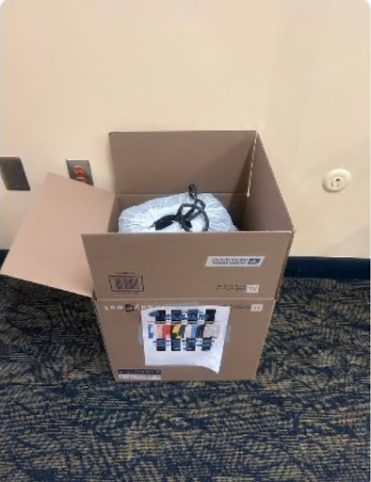As the campus buzzed with students reuniting with friends and navigating their classes, the university entered the “red zone.”
Julius Payne, the program coordinator for the Center for Sexual Relationship Violence Support Services (SRVSS), said the “red zone” is the first six weeks of the semester when students are more vulnerable to sexual assault.
First-year female students are more likely to be affected during this time frame, researchers discovered in a 2008 study from the Journal of American College Health.
Payne said first-year students, regardless of their gender, are at risk because they are adjusting to college life.
“That vulnerability I think is just a little bit higher for incoming freshmen because they are in a new position,” he said. “They don’t necessarily know how college goes or what the parties and different atmospheres look like.”
Brenna Root, a freshmen art history major, said she had never heard of the “red zone,” and thought first-year students face a higher risk as they experience a “false sense of freedom.”
“It’s like they get away, they’re away from their parents and they think they have all this independence,” she said.
Potential perpetrators also take advantage of first-year students by promising to help them adjust to college, Payne said.
“I think perpetrators know that as well like, ‘I’ll be their friend, I’ll make sure that if we go eat together, I’ll show them the ropes,’” he said.
Tamera Hunter, the chief executive officer of Townhall II, said students may be hesitant to report their assaults when they become comfortable with college life.
Students may have difficulties reporting an assault when they know the preparator and share the same friend group, she said.
“The shame, the guilt, the depression, the PTSD, it all funnels simultaneously,” Hunter said. “Then all of the sudden people take sides, and then your social support network is gone if they don’t believe you.”
From this, students can lose their self-esteem, think others won’t believe them and choose not to report their assault even when they have concrete evidence, she said.
The American Psychological Association discovered an estimated 90% of female and male students’ assaults are not reported because of guilt students have as they view themselves responsible for their assaults.
Students may also want to speak in confidentiality or may not want to file a report, Payne said.
To combat the “red zone,” SRVSS has begun promoting their Bystander Intervention Week, he said.
A bystander is an individual who witnesses an incident of sexual relationship violence and has the opportunity to intervene, according to the Rape, Abuse & Incest National Network.
Bystander Intervention Week will occur the last week of September and educate students on how to look out for each other, Payne said.
“We’re making it known this is how you build culture, help prevent this and stop this,” he said. “That way it’s out there, that way we plant the seeds, and then our students carry it forward.”
Hunter said topics like self-esteem building, appropriate boundaries and bystander training should be constantly discussed to prevent assault.
“If you see something, say something,” she said. “We need to be able to communicate what our romantic and sexual boundaries are, and have the self-esteem to be able to do that.”
Payne said he strongly encourages student to seek help following a sexual assault whether they go to the Williamson House on campus, or utilize other resources like Townhall II.
“My biggest thing would be if you’re ready, when you’re ready, talk to someone,” he said.
Adriana Gasiewski is a reporter. Contact her at [email protected].











